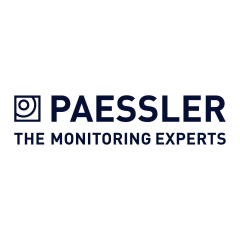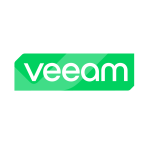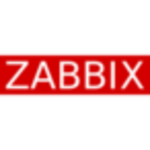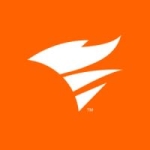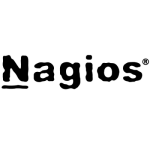What is our primary use case?
- We run two data centers and are a hosted voice provider.
- We have an Azure presence.
- We use PRTG as a monitoring solution to effectively monitor all of our servers, routing infrastructure, and switches.
- We have some Session Border Controllers, which are effectively Voice Firewalls. We monitor the uptime and availability of those via things like Ping. However, we are also using SNMP sensors.
- We've written some SQL queries that PRTG is utilizing.
- We check things, like error logs, through PRTG.
- We are feeding things, like system log messages.
- We use SNMP Traps.
How has it helped my organization?
The scheduling has improved organization, effectively the ability to set maintenance windows where alerts won't go off on an evening. We have an on call router, as many businesses do. In our previous on call solution, we would be inundated with information that would come through outside of working, core business hours, which meant that the on call staff, like myself, were woken up when we didn't need to be. Whereas, with PRTG, it has been great. We can go in, and say "We only care about these core set of criteria outside of this time period."
If there are upgrades, or things where we know alerts will be generated, we can go in and suppress those. While quite a simple feature, it is comprehensive, and it has a lot of capability to it.
What is most valuable?
The product is easy to use. The web interface is fantastic. It is very easy to create a user, giving it to someone with little explanation of how to use it. That is its biggest strength.
It is very colorful. We have used it in quite an open office environment. We have screens on maps that we've made, which is great when customers come in. It gives them a clean visual.
There is a great variety or sensors. We use the custom SNMP sensors quite a lot, where you can import MIB files. The sensors has some cool little tools, as well, which you can use for modifying MIB files and importing them to PRTG.
It is nice to have one place where all the information is right there in front of us.
The capacity planning is quite good, as you can monitor the CPU increase over time. While it is a manual process, we can go in and correlate it against an increase in user count, etc.
The feature set is very strong compared to other products that I have used. It's great, because it does everything that we need it to do. It's easy to use. It looks great when you present it in an open office environment. If you have it onscreen, it displays the information nicely. The ability to set thresholds against sensors are great.
What needs improvement?
The desktop app is terrible. If I had to pick any flaw with the product, that is it. It seems like they haven't updated it. It has been six months since I last used it, and while they may have done something since, it was somewhat clunky. We use 4K resolutions on our laptops, and it didn't work properly. So, we had a few problems with the desktop app.
I would like to see improvements on the desktop app and mobile app. We use the mobile app a bit. However, since we try to keep our data centers really fenced and secure, we don't use it extensively, just in our offices. Some improvements to the desktop application would be great.
The thing that we do struggle with a bit is in the historic data. If I want look over 30 days, because it averages out onto one graph, you can't zoom in and drill down information. E.g., if we had a problem with something a week ago, I can't really go back in and drill into what that might be, because it has already averaged it out over that time. While I get that this might be for technical reasons, it is still a bit of a limitation.
For how long have I used the solution?
More than five years.
What do I think about the stability of the solution?
We run it in a cluster, so we have two that run together. The cluster behind it is sketchy at times. Maybe that might be due to a configuration on our side.
From the stability point of view, it's 90 percent there.
Now that we have the distributor remote probes, it is pretty strong. The product used to be affected by load. This was because we were exceeding their recommendations. If you follow the recommended hardware guidelines and keep the sensor count to what they recommend, then it is pretty stable.
What do I think about the scalability of the solution?
The remote probe thing is great. We have multiple data centers with multiple regions that we have to monitor. It's nice to know that all we have to do is throw up a remote probe into one of these areas, then have it talk back to the master cluster. We don't have to worry about anything outside of that. We don't have to worry about deploying brand new PRTG servers, as it's a lightweight installer. From there, we can even do an auto scan.
If we do build an entire new data center, we can just install a probe, get it to scan its local subnet, then feed that information back, which is really good.
The solution can 100 percent grow with our business.
How are customer service and technical support?
The technical support seems to be quick, clever, and has a comprehensive knowledge base online, which is fantastic.
We have never really had a point where we were like, "We want to do this," but PRTG was the limiting factor. If we do ever hit that point, which we do on occasion, the technical support is brilliant.
You can go to the technical support, and say, "We want to achieve this." For example, we wanted to compare two links in completely different data centers. We wanted a way where could present a graph on the screen that would compare the two and see how they were doing against each other. We didn't know how to do it. We couldn't figure out how to do it, so we approached PRTG. They said, "It's fine. You just want to do a custom sensor and follow these steps."
If we do ever hit walls, we go to the technical support. To be fair, we rarely seem to hit any walls.
Which solution did I use previously and why did I switch?
Before PRTG, we used something called MRTG, which was an open source alternative. Previously, it was very clustered, small monitoring systems which were just syslog-based with big text files. It was alerts generated for just about everything. We had no central way of doing anything, and it got to the point where it was unmanageable. It became a case of needing one solution which could come in and just do everything.
The remote probes are great. We had some base core probes starting up, where they would collapse under the stress and the load. Setting up the remote probes has been great, especially the remote administration aspects of them.
How was the initial setup?
In the early days, we overloaded it a bit too much. We didn't distribute it out enough and had quite a lot of issues with it clustering, which I don't thing that we have entirely remedied now. However, its installers are quick and the web interface is exceptional. Once you get to that point, there are no problems at all.
What about the implementation team?
We went direct to PRTG to buy it and implemented it ourselves.
It doesn't take long, maybe an hour, to do the setup and start receiving basic feedback on the functionality. Though, trying to get useful information, that can take a lot longer. Sometimes, there is a bit of information overload, which is not PRTG's fault. As users, you are quite eager to go scan everything and see what comes back. To really understand the information, sometimes it can takes months. However, that is not on the software.
What was our ROI?
It has saved time, because it makes it easier for us to find and identify problems. In the past, we might have gone to four or five different monitoring systems. Whereas, we now just go to one. It is one interface (webpage). We go there and find out everything that we want to know.
We paid quite a good chunk of money for it, but we don't have to pay for anything else (in terms of monitoring).
What's my experience with pricing, setup cost, and licensing?
We bought a license for 4000 sensors.
Which other solutions did I evaluate?
We looked at the market, and it wasn't PRTG at first, which was just something we found from recommendations from other people along with a carrier that we worked with, a partner of ours, they actually used it. That was what sort of led us to it. They were using it for their end users, showing customers PRTG data files, stating, "We can give you all this information." We were like, "We want to do that as well!" So, we sort of stole it from them.
We are extensively using its feature set, and there are a load of features in the product that which other solutions don't have.
It is abundantly helpful in bringing all our stuff in-house. Another platfrom that we use is SolarWinds Orion, which is a pure network monitoring tool. PRTG is much more reliable, easier to use, and the information is more clear and concise.
What other advice do I have?
PRTG is great for everyone. It is really broad, and you can use it as intrinsically and technically as you want. At the same time, you can get some nice, clean, concise front-ends. We use it every day. We rely on it heavily and trust it. We have so many people that use it, and I receive very little complaints about it. The only problems we have: The desktop app is not great, and every now and then, we have issues with the clustering.
PRTG has everything pretty much hammered down. They should keep releasing sensors. They also seem to be producing stuff at quite a good rate.
The product has been great, as it has really brought together all our monitoring.
Disclosure: My company does not have a business relationship with this vendor other than being a customer.

